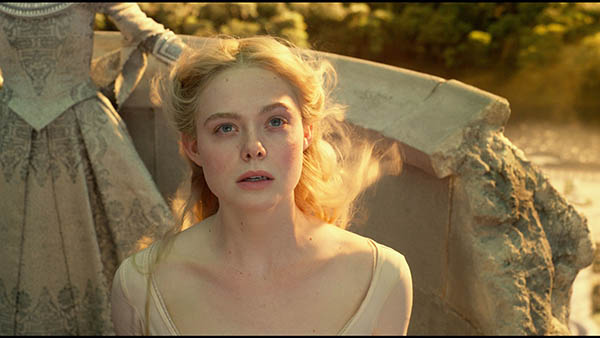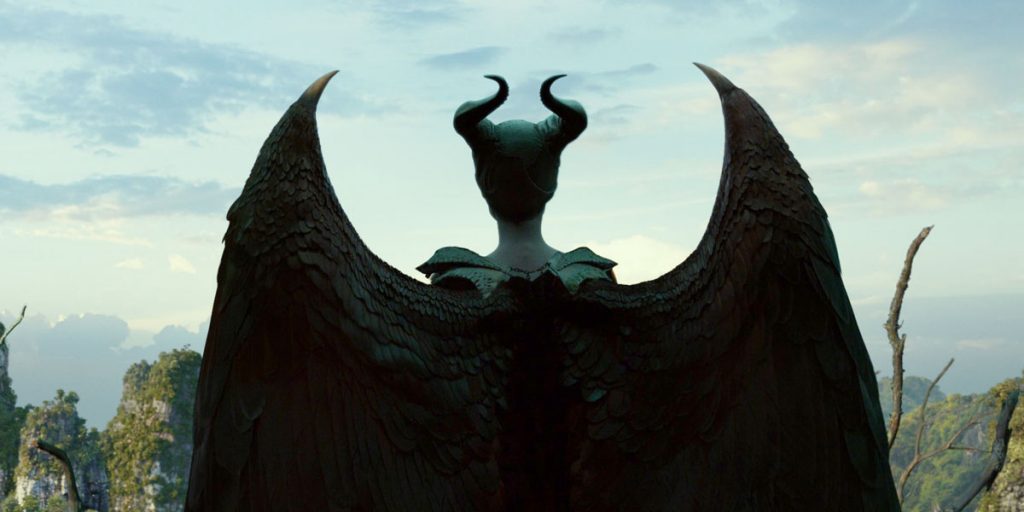Disney’s Maleficent: Mistress of Evil is not a classic fairy-tale, but a coming-of-age story that outdoes the prequel in every possible way.
Sleeping Beauty has now fully awakened from her fairy-tale-like slumber, and is here to prove a point. She’s as woke as any classic tale would ever allow her to be, arguing against the unfair discrimination of humans towards the magic folk of the Moors, and struggling to find her own way in one of these two rivalling worlds.
That’s right, because the narrative of Maleficent: Mistress of Evil tries to distance itself from the previous, precarious and bland one. It is a story about self-recognition, that deals with what it means to grow up, make choices and take responsibility for them. If the first film tended to follow merely the events surrounding the original fairy-tale – and Angelina Jolie’s prosthetic cheekbones – the sequel has taken careful note of its errors, and is here to make amends. Its redemption process occurs gradually in the film, which provides its previously one-dimensional characters with a renewed self-awareness and the ability of – finally – speaking logically.
The sequel is set five years after the first film’s final events. We left Aurora (aka Sleeping Beauty) on her coronation day, happily greeted by the fabled creatures of the Moors and by her not-so-evil-anymore Godmother, Maleficent. The finale foretold the reconciliation of the magic kingdom with the human one.
As obvious as it may sound, the interregnal peace couldn’t last long. The opening scene of Mistress of Evil shows us how this peace will be broken: it all starts with Prince Philip proposing to Aurora. At once, this announcement causes friction between the princess and Maleficent, who doesn’t quite embrace it with open arms. While Aurora starts arguing about her being a mature woman and claiming her own right to choose for herself, Maleficent is puzzled. The real reason why she doesn’t want to give Aurora up is the most human of all: she’s a caring and protective (god)mother.

And here’s why the sequel has grown wiser than the first movie: Indeed, its characters seem to have become more mature. Well, it’s not as obvious as it may sound, since fairy-tale characters usually own no historical memory of their past and wind up making the same mistakes all over again. That said, it’s clear as day that both Aurora and Maleficent have learned something from their past misfortunes: before the proposal, Princess Sleepyhead was rationally dealing with her duties as Queen of the Moors, while the evil witch is now proudly seen displaying a soft spot for her kid.
The real problems start when Aurora and Maleficent are invited to court to celebrate the wedding announcement. Here we’re introduced to Queen Ingrith, a new character who seems determined to give Maleficent a hard time. Portrayed by the gracious and glacial Michelle Pfeiffer, the Queen – Prince Philip’s mother – immediately stands out as the evillest character of them all, and it’s clear that she’s been doing some plotting.
There isn’t enough space at court for two prima donnas such as Maleficent and Queen Ingrith, so, while we get to see Michelle Pfeiffer for quite some time, the film unapologetically forgets about Jolie’s character, who’s nowhere to be seen for the best part of the movie. Pfeiffer’s acting is majestic and totally convincing, even if she’s portraying a character whose aims are only dictated by evil. You could say that Maleficent is deeply missed in the plot, since she’s the title character, but the truth is, she is not. Queen Ingrith, along with her lavish royal dresses and her desperate need to take you aside and tell you her own side of the story – so that she can convince you that she’s right, will make you forget about Her Highness cheekbones.
Also, the absence of any parental authority allows Aurora to grow individually, to live out her dream moment of independence and rebellion. We witness Sleeping Beauty’s attempt at coming to terms with the reality of things on her own. She’s now a strong and opinionated woman who is more than capable of overcoming the difficulties that come her way, without asking for help.
Still, the question remains: What’s the point of Maleficent being the title character if you can’t see her for most of the movie? One last perplexity arises from the title, regarding Maleficent being described as “Mistress of Evil”. As already pointed out by everyone who saw the first film, Maleficent is no evil character and, in the sequel, she’s no exception. That’s why the identity of the “Mistress of Evil” remains as unknown as the reason why this title was chosen.
Mesmerizingly shot, the film displays a series of fairy-tale-like framings. We are witnessing what mastering the CGI technique means today. Forget those useless and merely aesthetically-pleasing scenes that would portray Angelina Jolie spinning in mid-air – no, we are standing in front of a perfectly balanced mix of solidity and blurring fantasy. These characters, along with their newfound self-awareness, are incredibly solid and know how to own the scene – whereas in the first film the main character was mostly the fantastic background. It is mainly the new director, Joachim Rønning, who is to be acknowledged for the sensible upgrade he brought to the sequel (we remember him especially for the 2017 Pirates of the Caribbean).
The new “woke” and conscious interpretation of the Sleeping Beauty story is a fairy-tale for the present time, the one we want to grow old with and tell our children about.
Maleficent: Mistress of Evil is now available to watch on digital and on demand.

